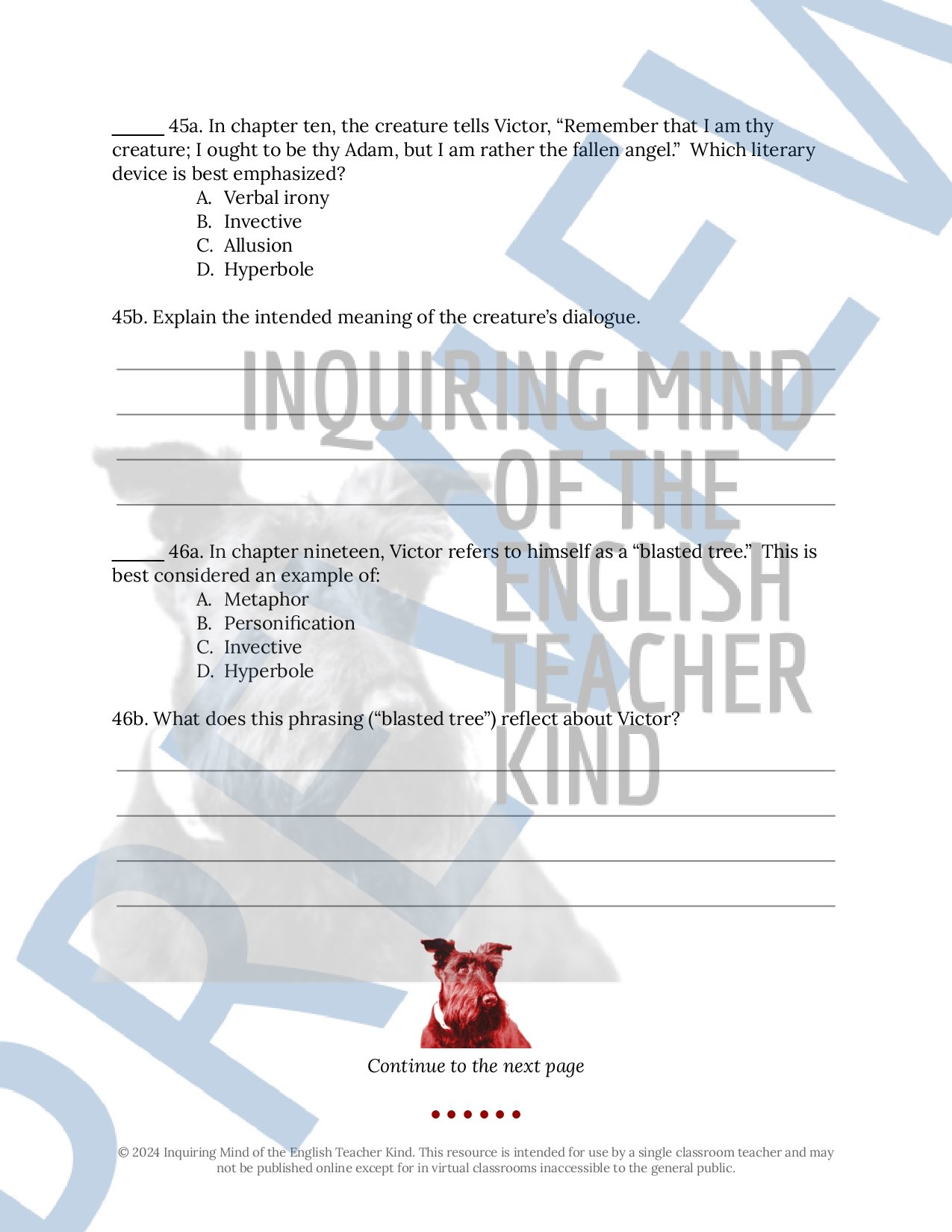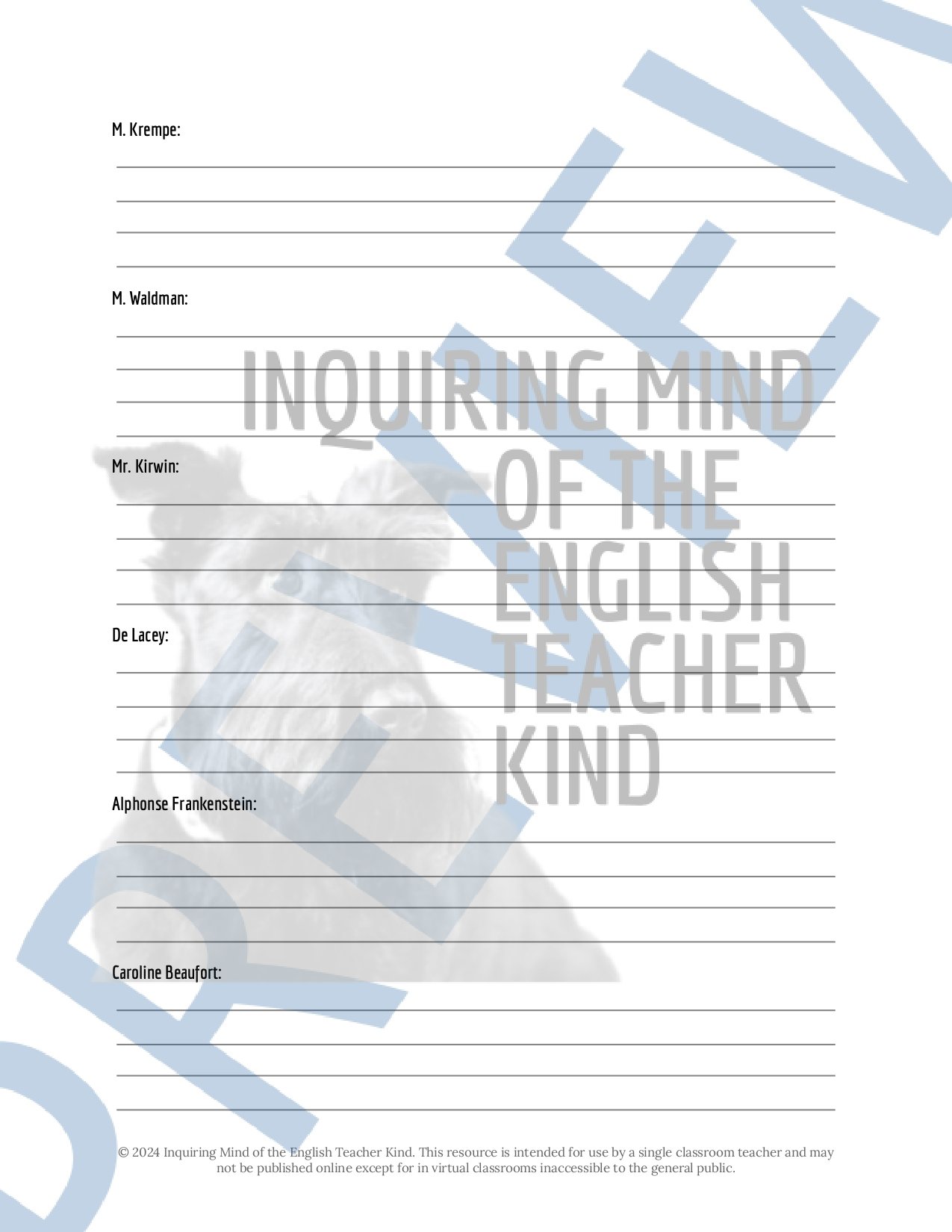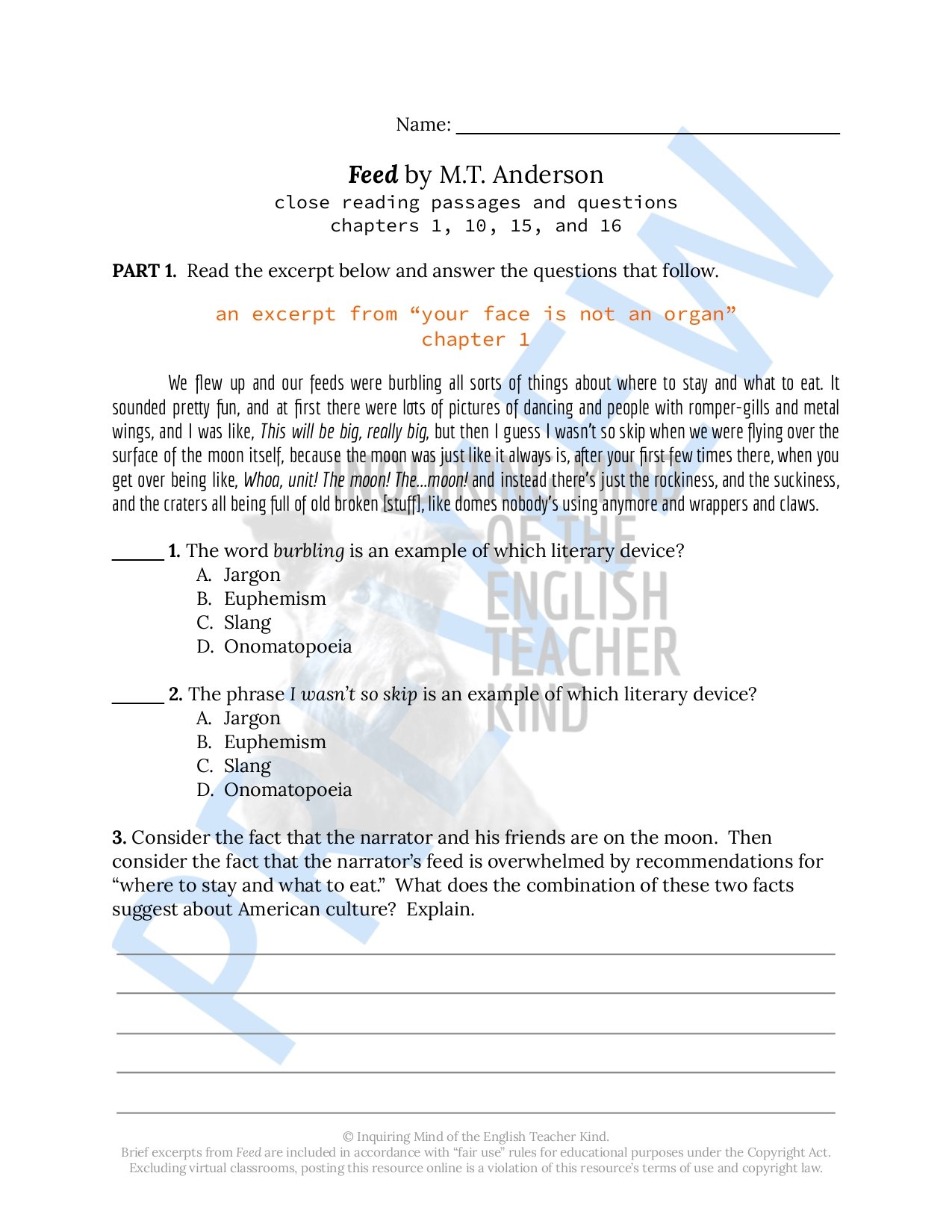 Image 1 of 26
Image 1 of 26

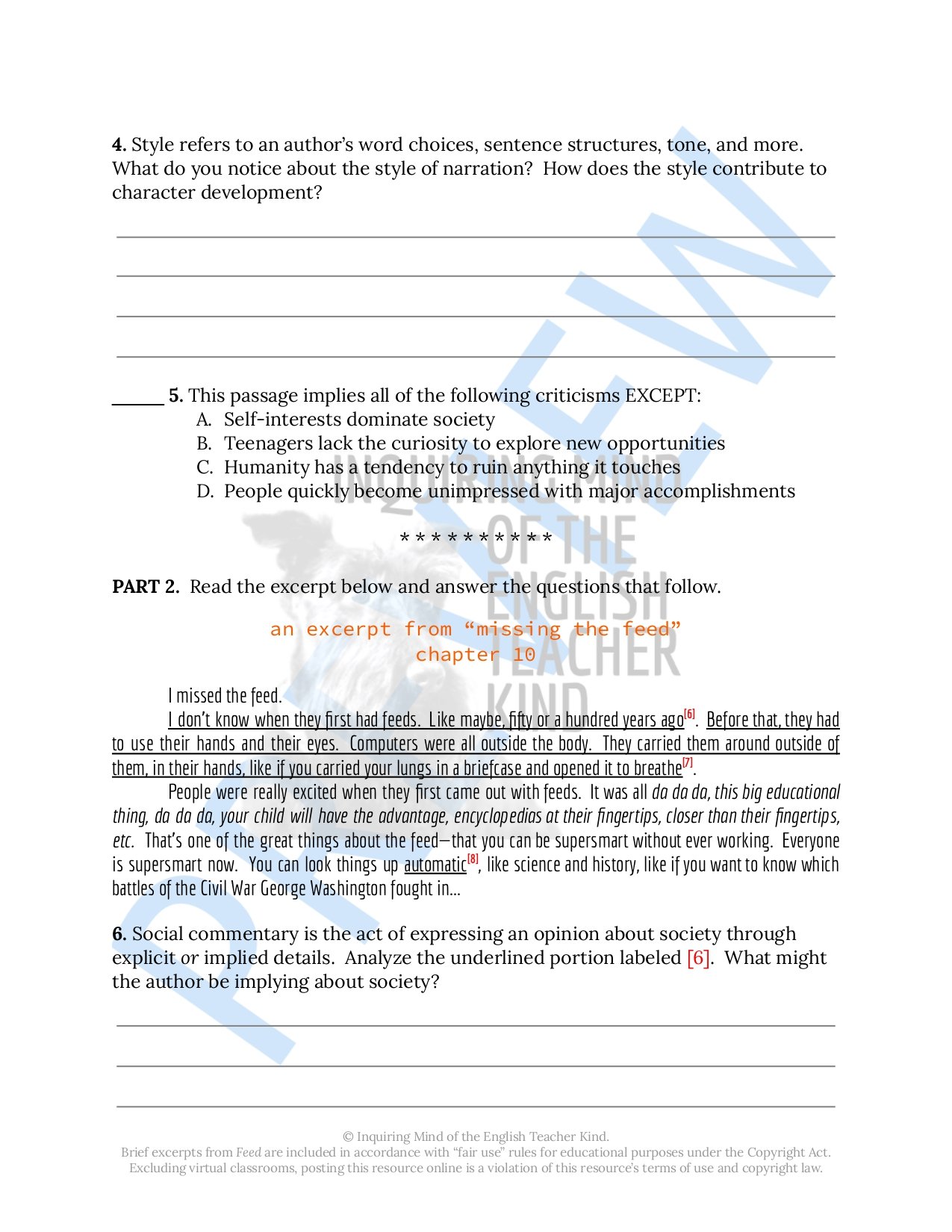 Image 2 of 26
Image 2 of 26

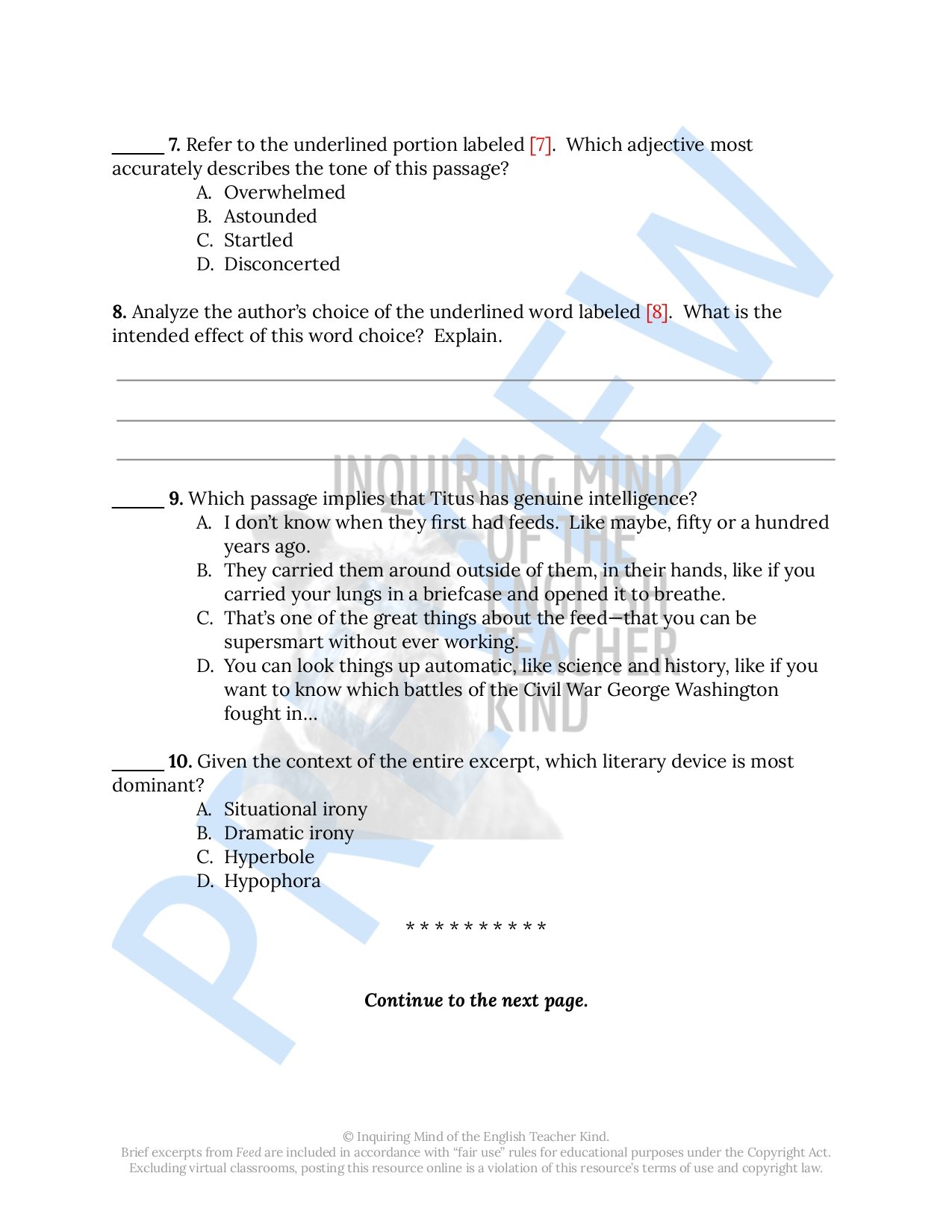 Image 3 of 26
Image 3 of 26

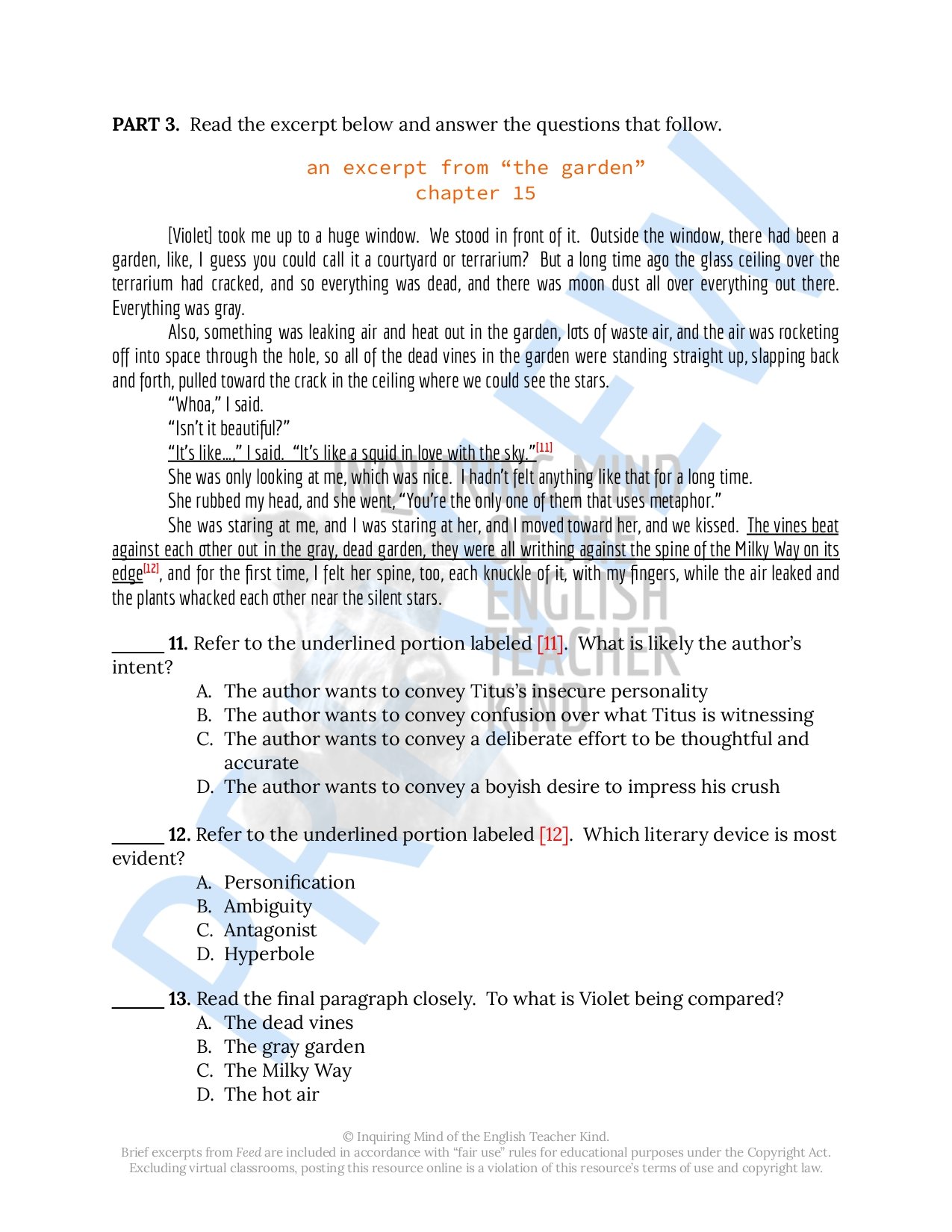 Image 4 of 26
Image 4 of 26

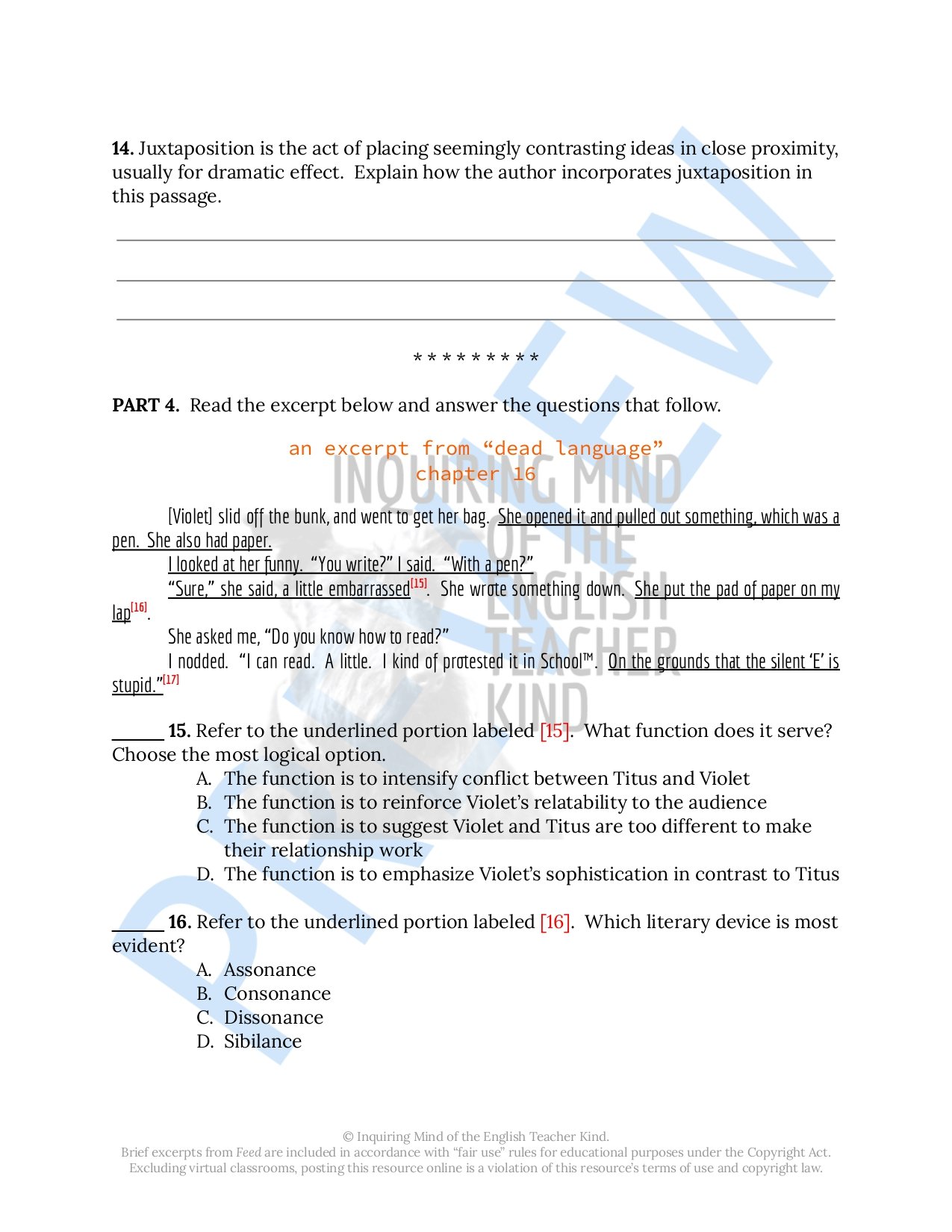 Image 5 of 26
Image 5 of 26

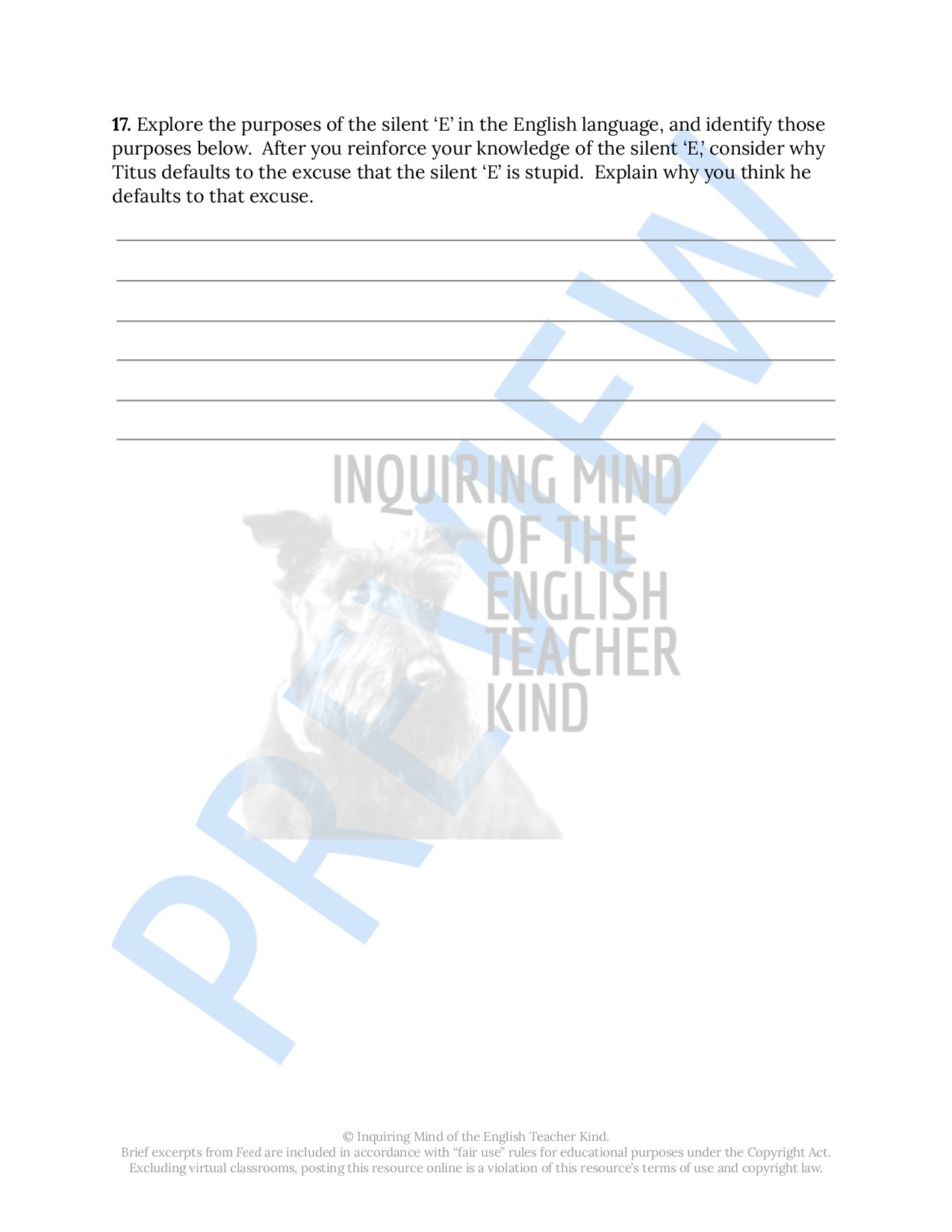 Image 6 of 26
Image 6 of 26

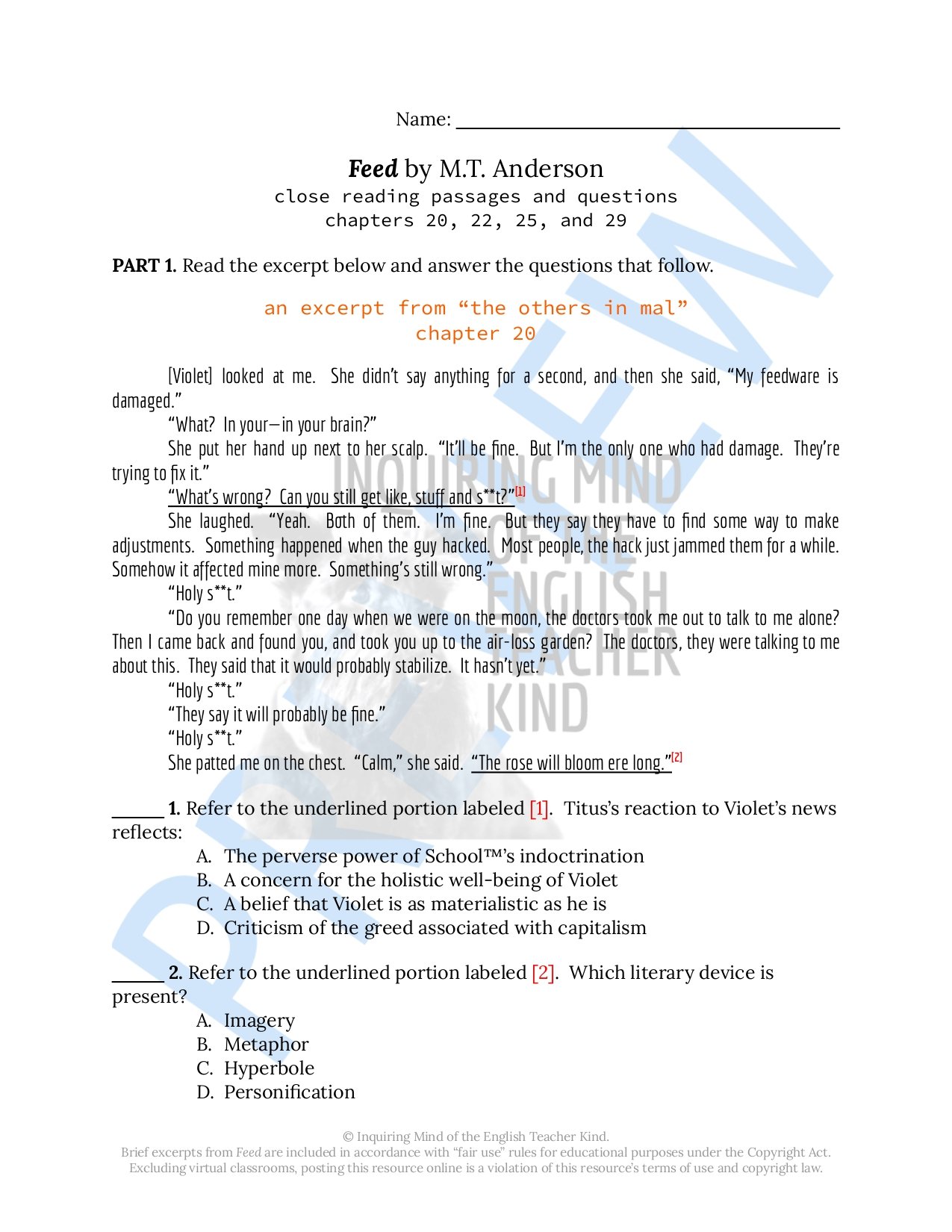 Image 7 of 26
Image 7 of 26

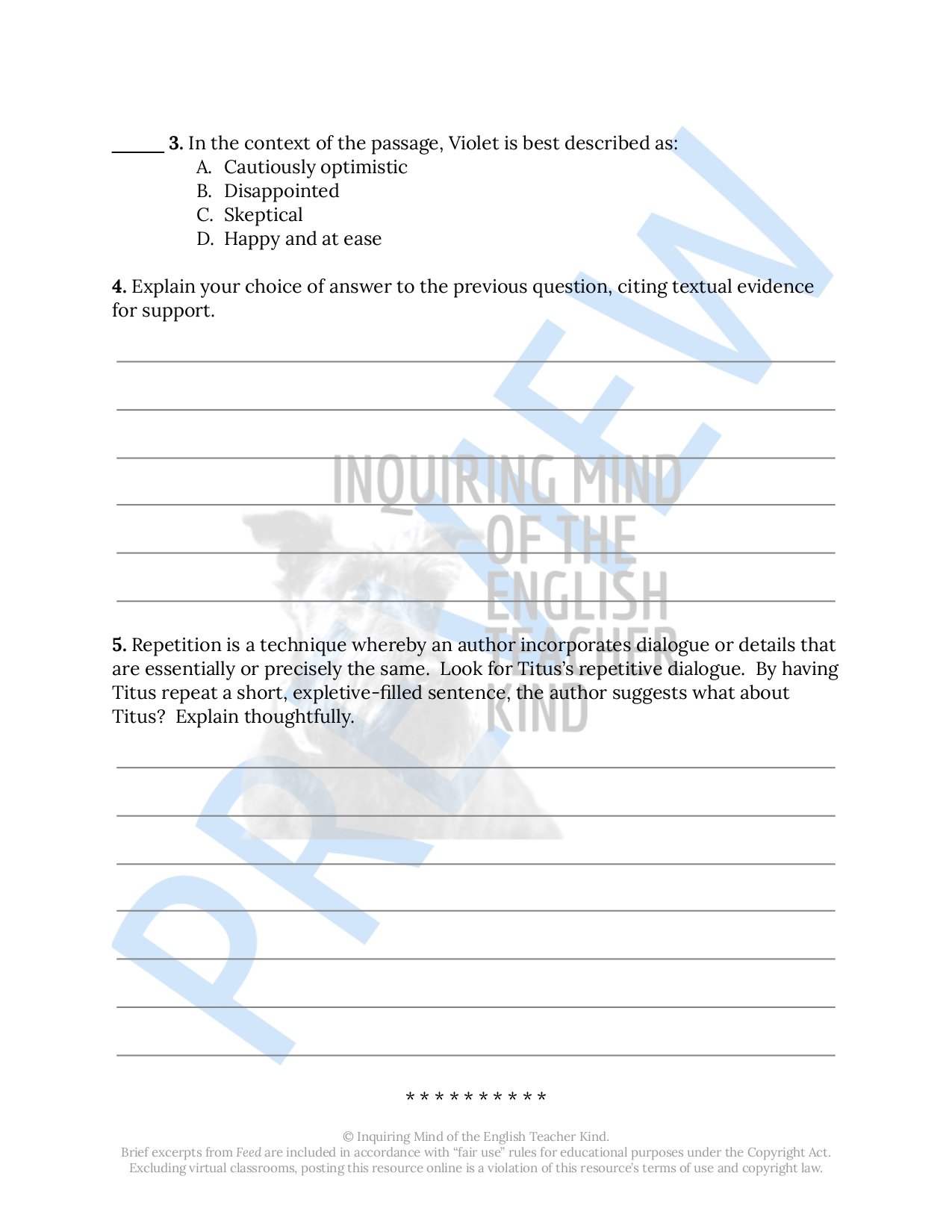 Image 8 of 26
Image 8 of 26

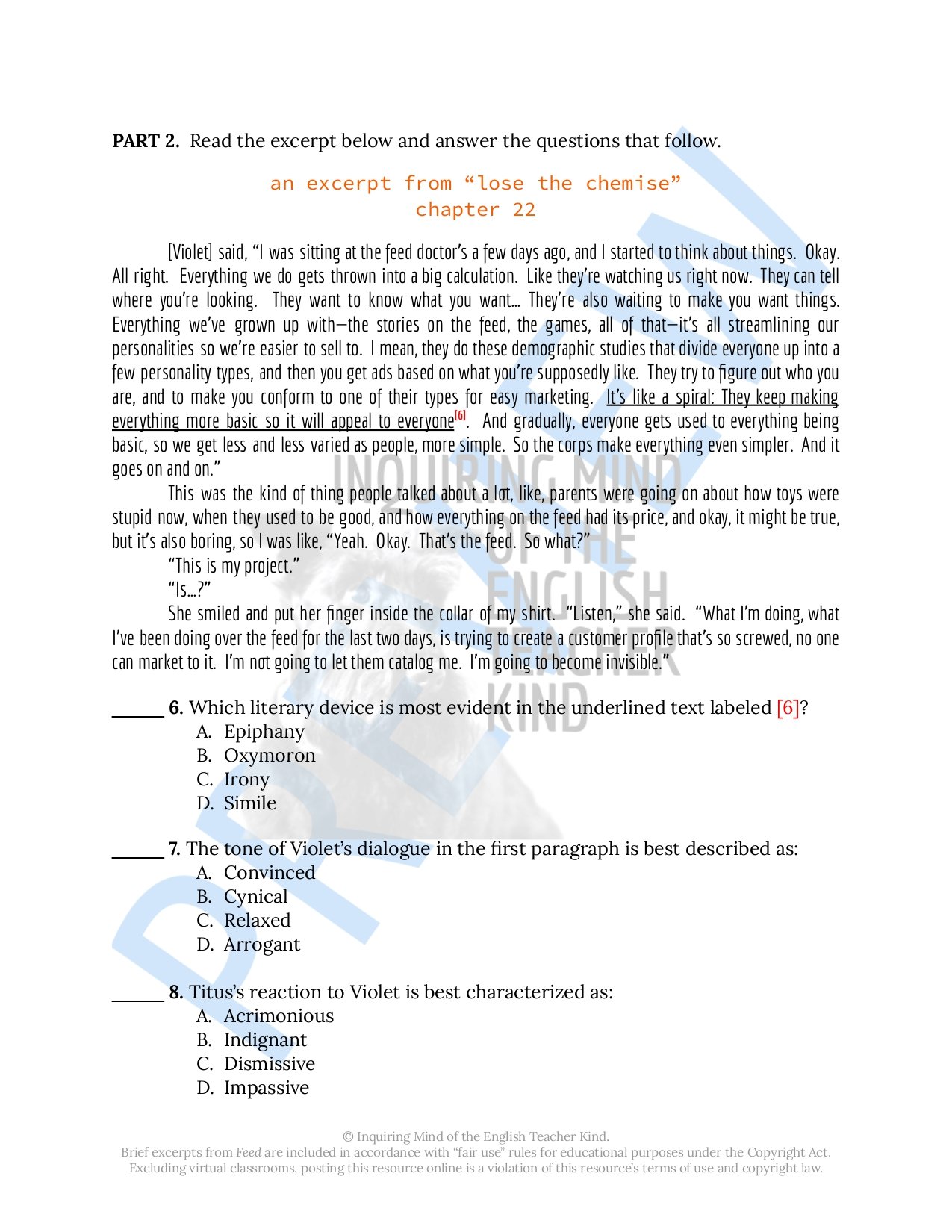 Image 9 of 26
Image 9 of 26

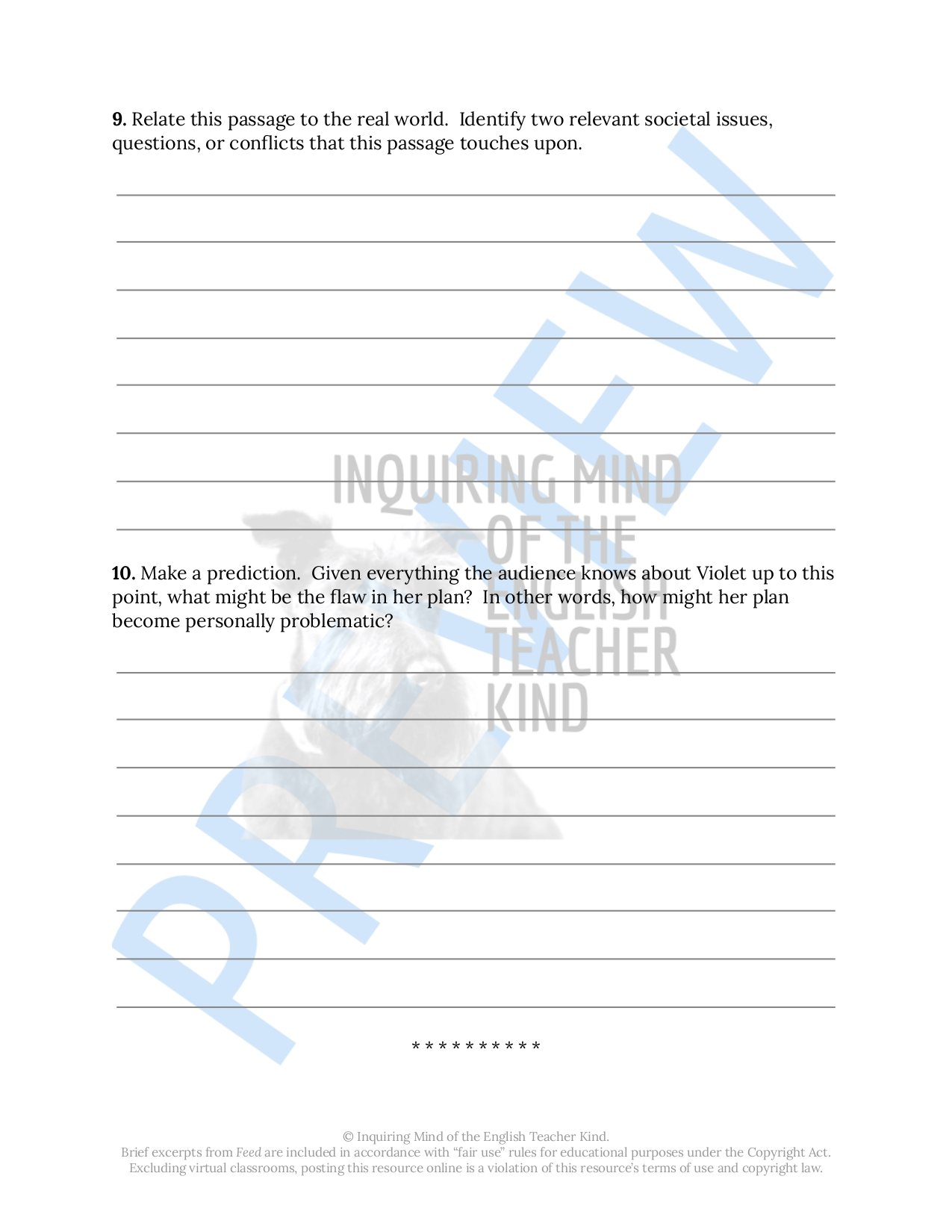 Image 10 of 26
Image 10 of 26

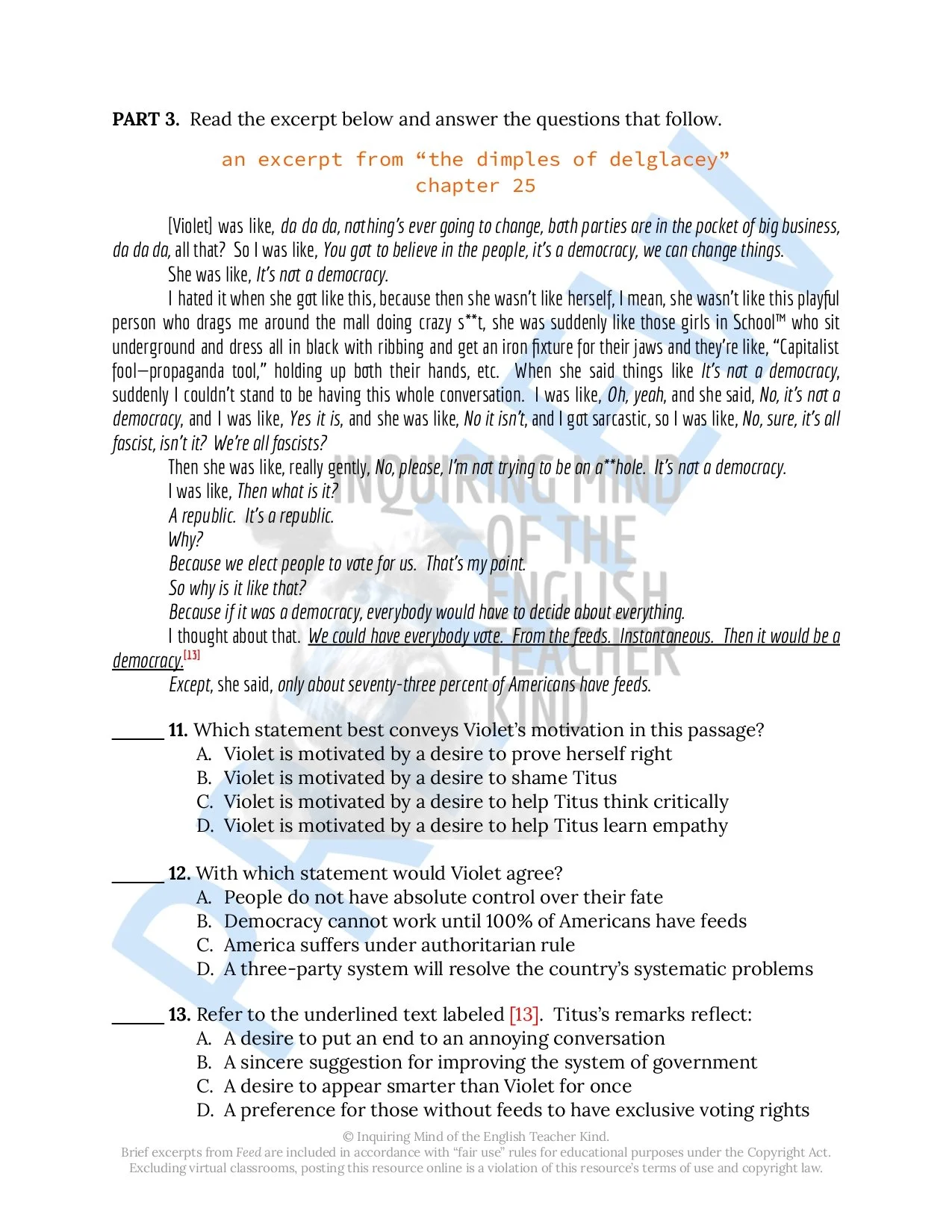 Image 11 of 26
Image 11 of 26

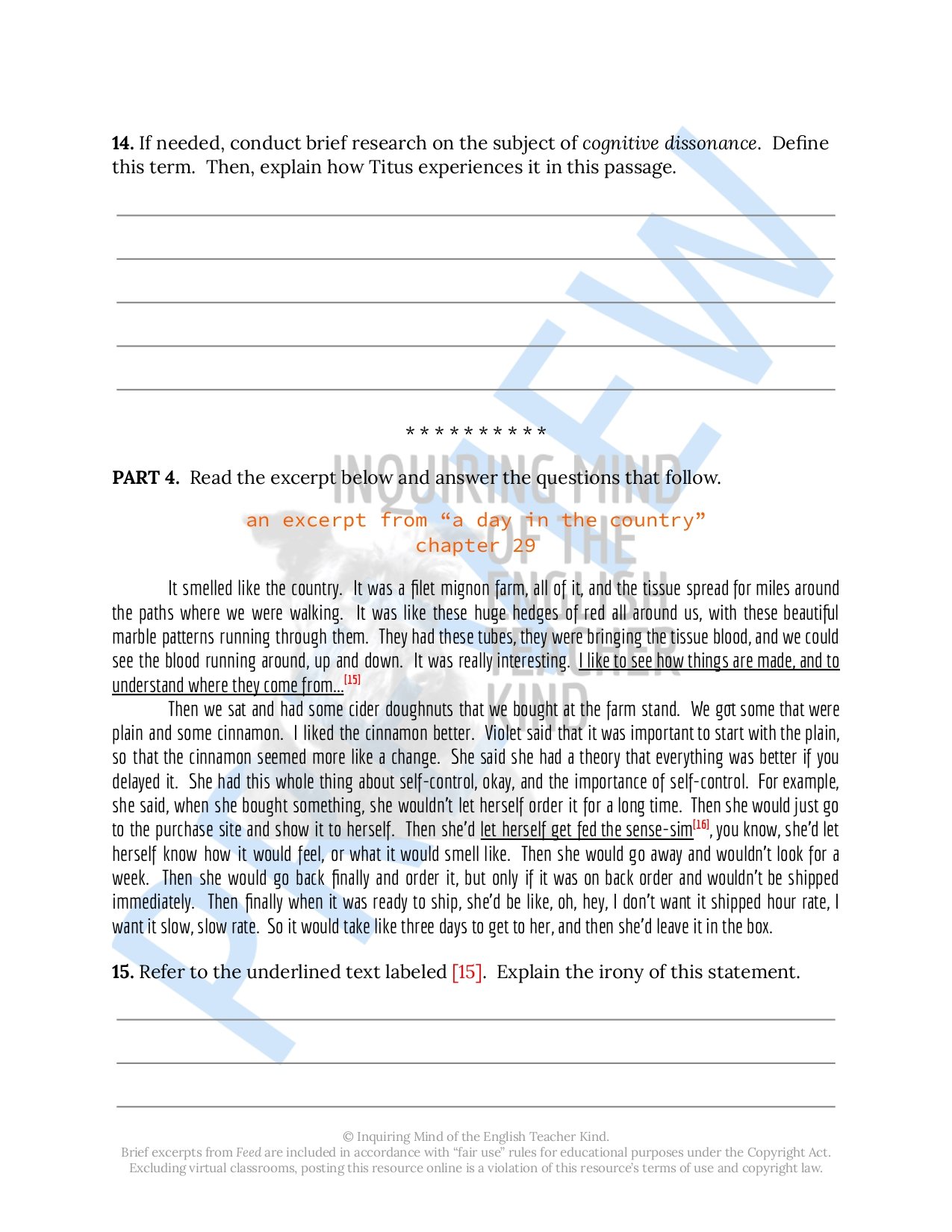 Image 12 of 26
Image 12 of 26

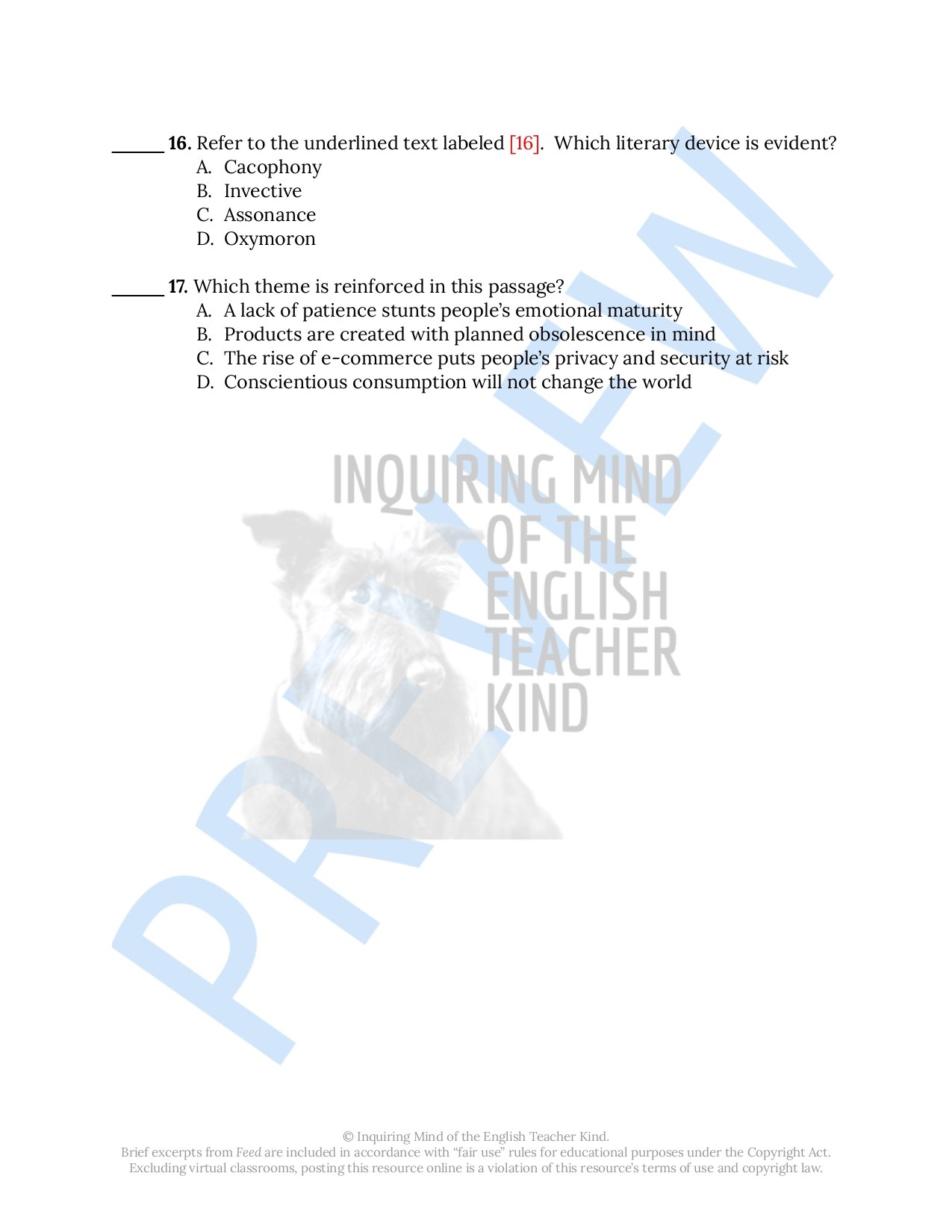 Image 13 of 26
Image 13 of 26

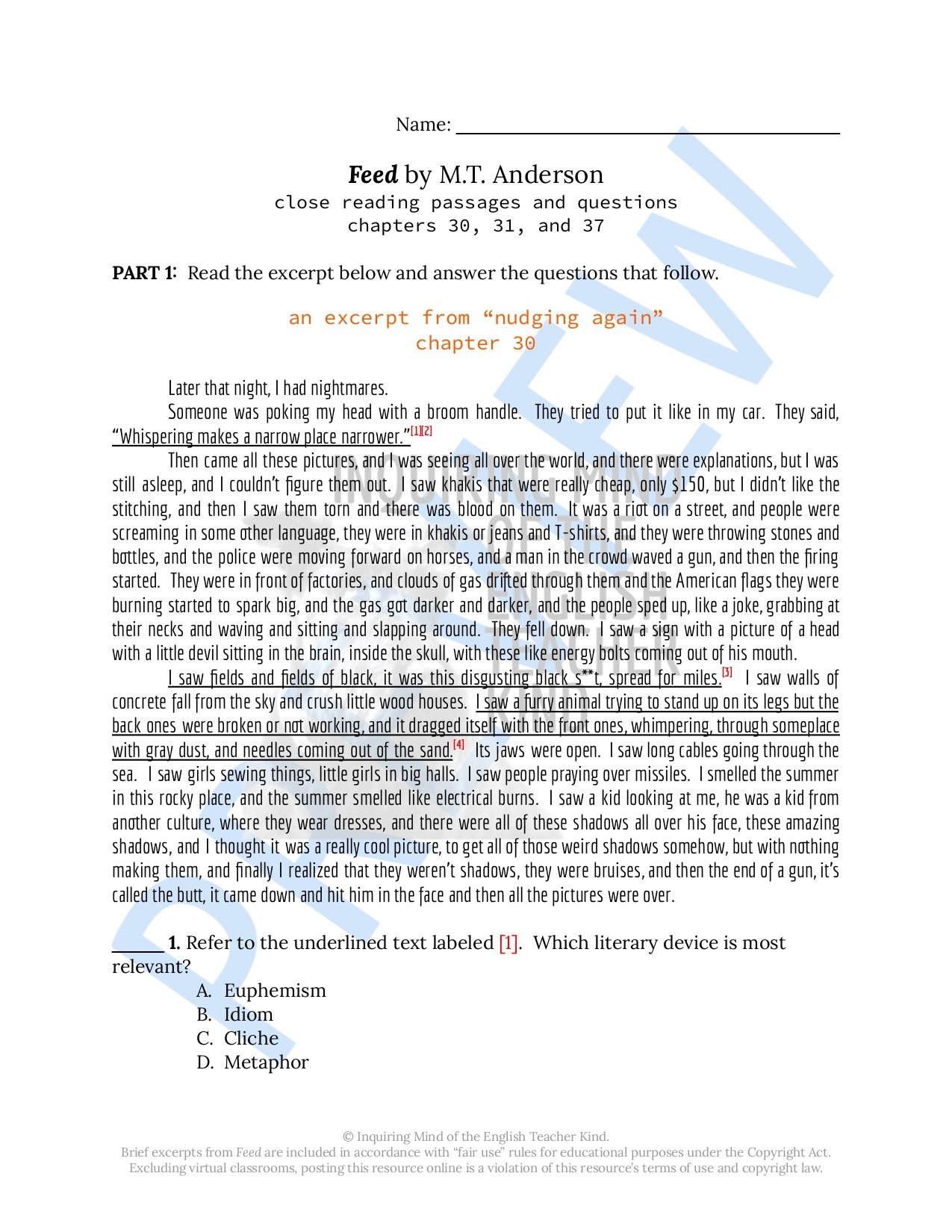 Image 14 of 26
Image 14 of 26

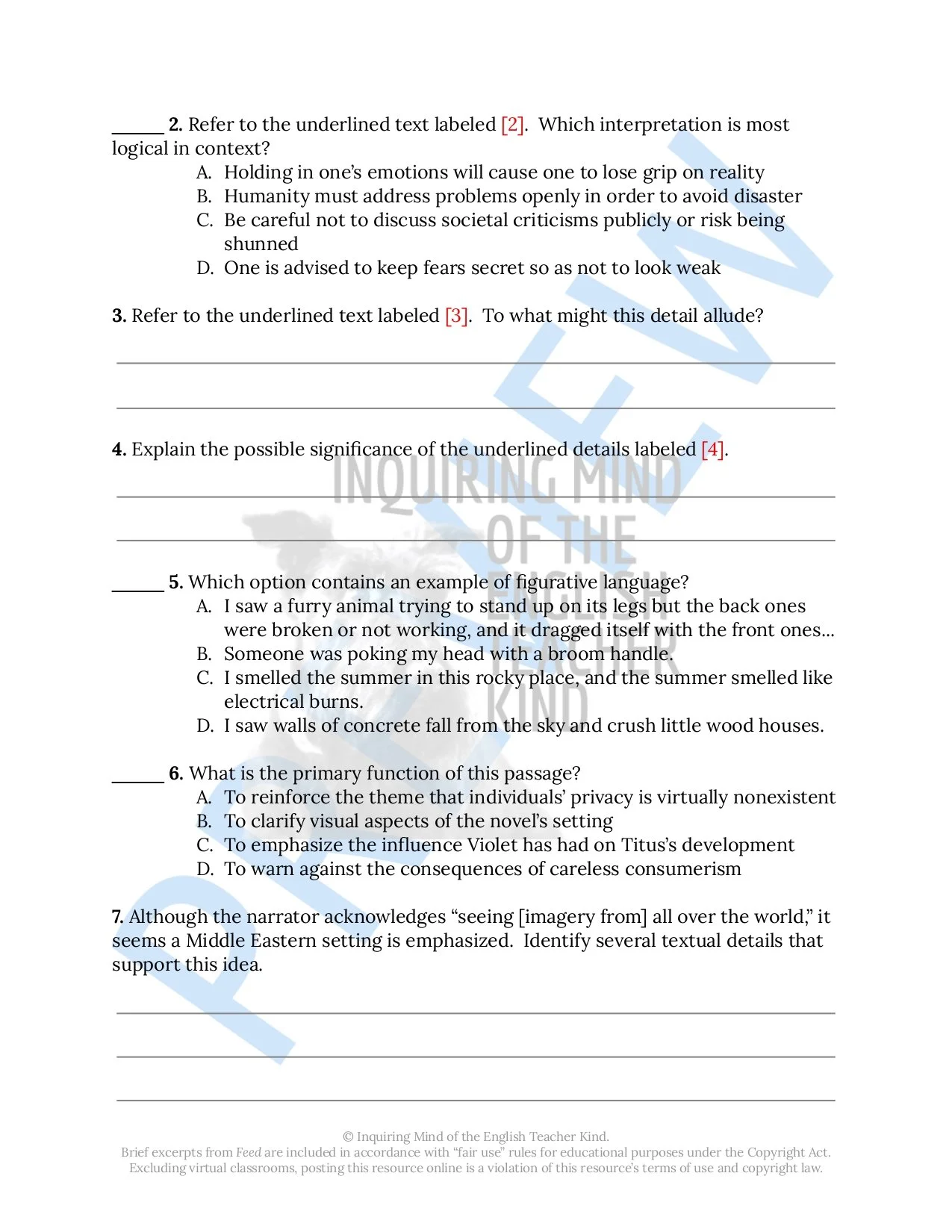 Image 15 of 26
Image 15 of 26

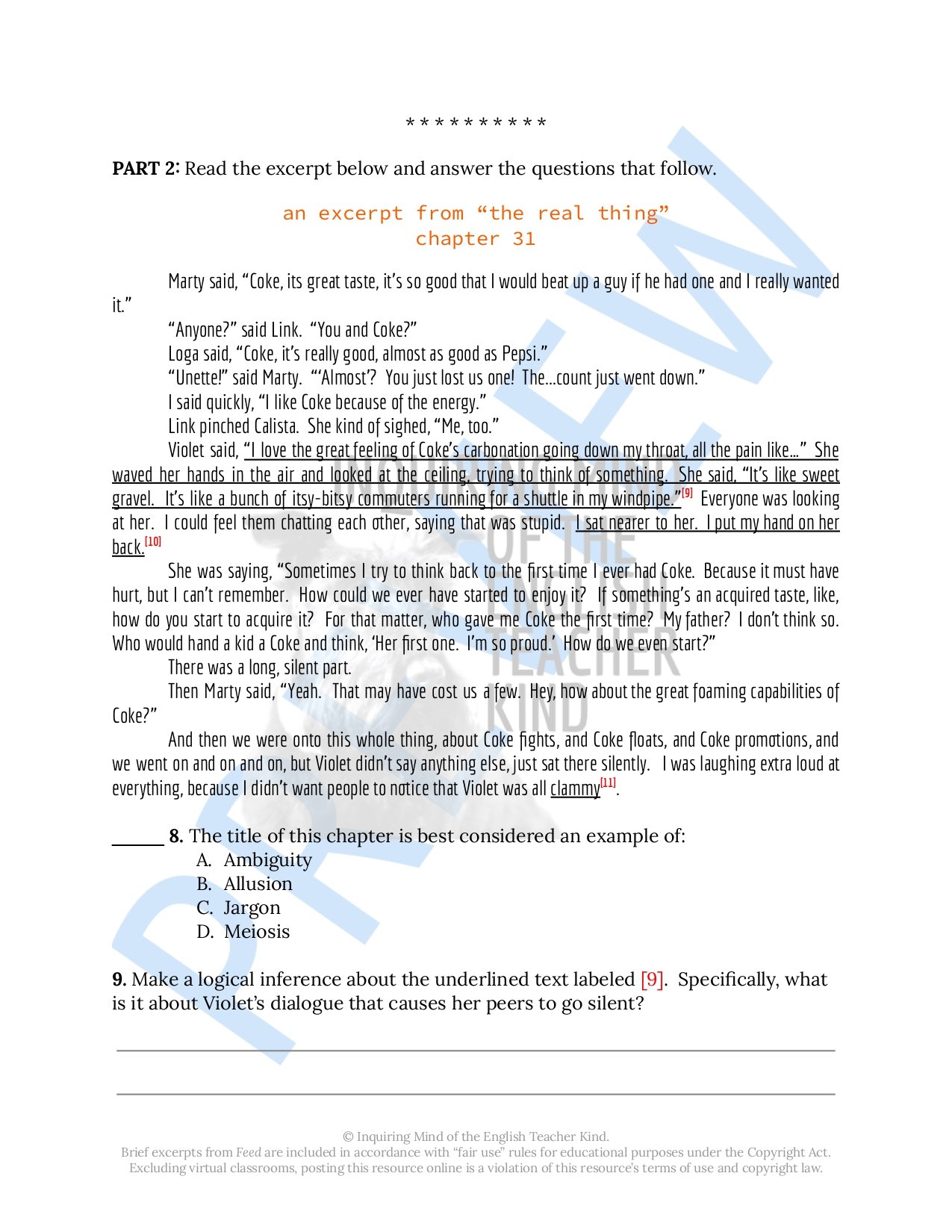 Image 16 of 26
Image 16 of 26

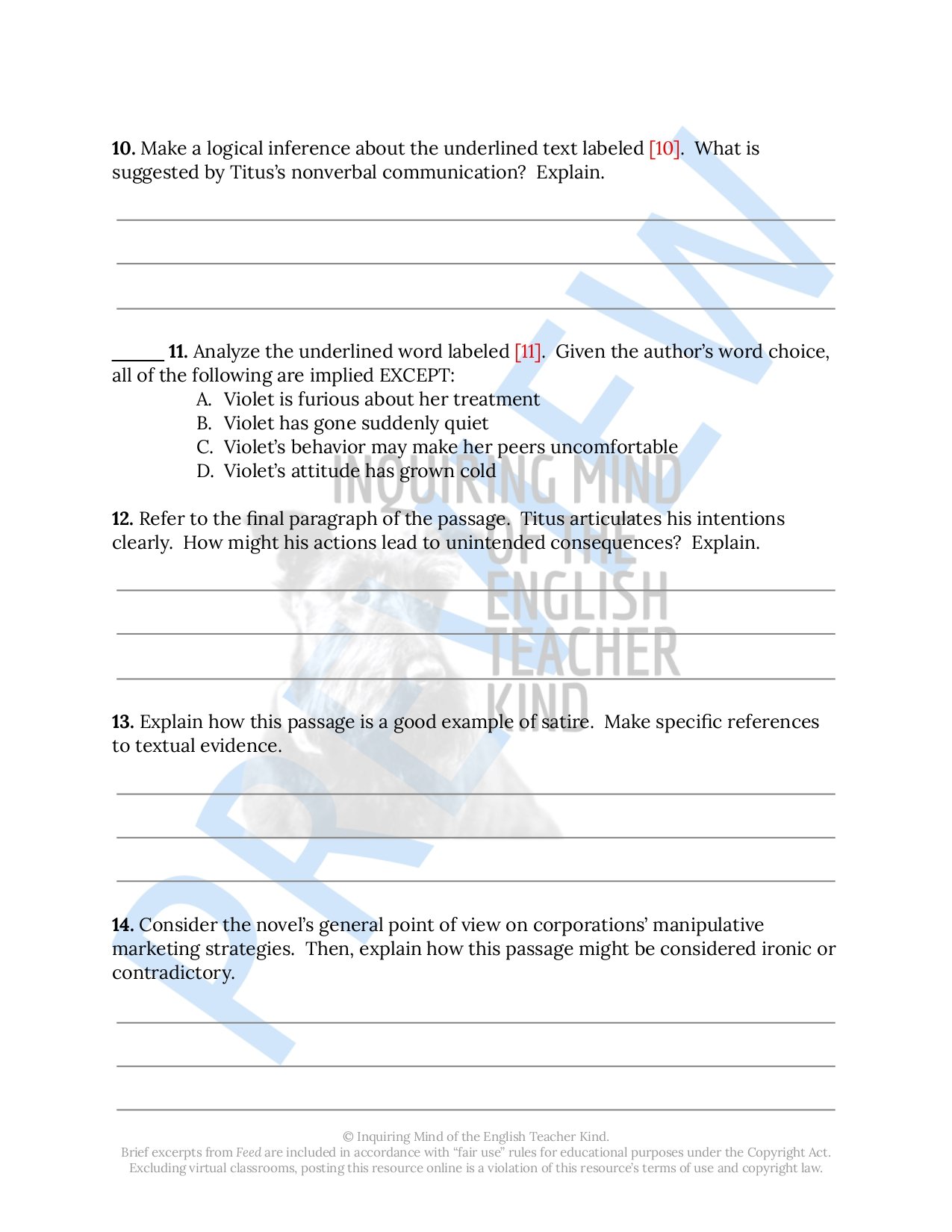 Image 17 of 26
Image 17 of 26

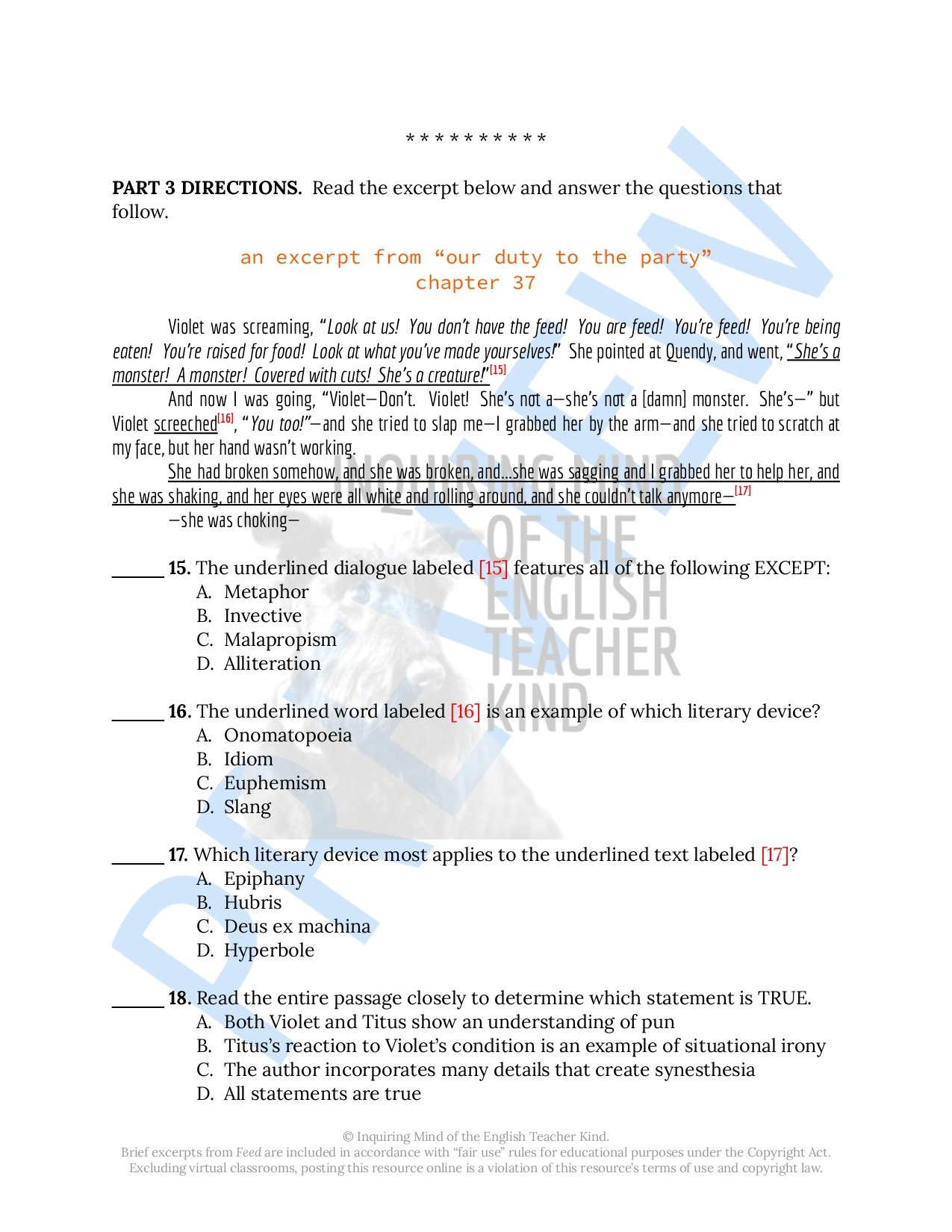 Image 18 of 26
Image 18 of 26

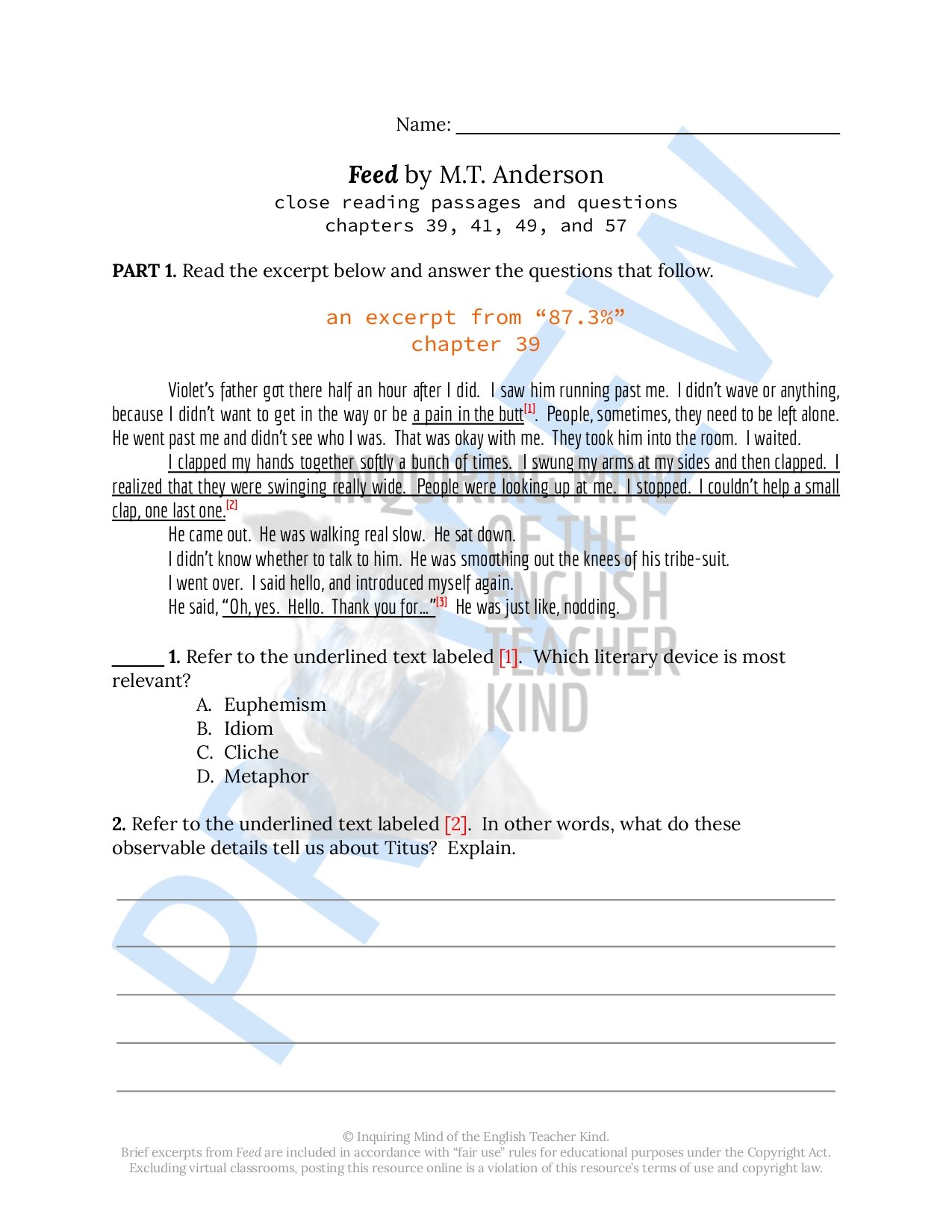 Image 19 of 26
Image 19 of 26

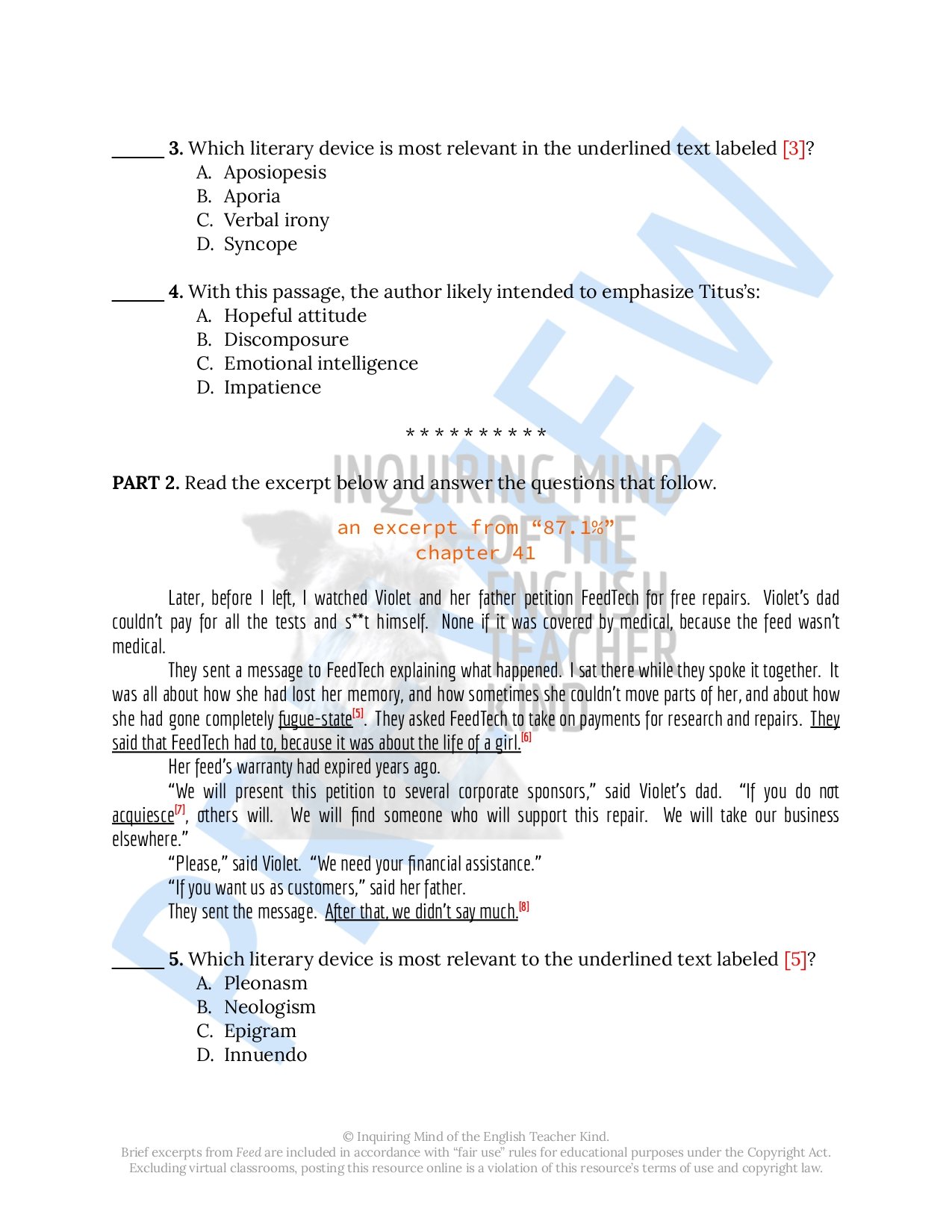 Image 20 of 26
Image 20 of 26

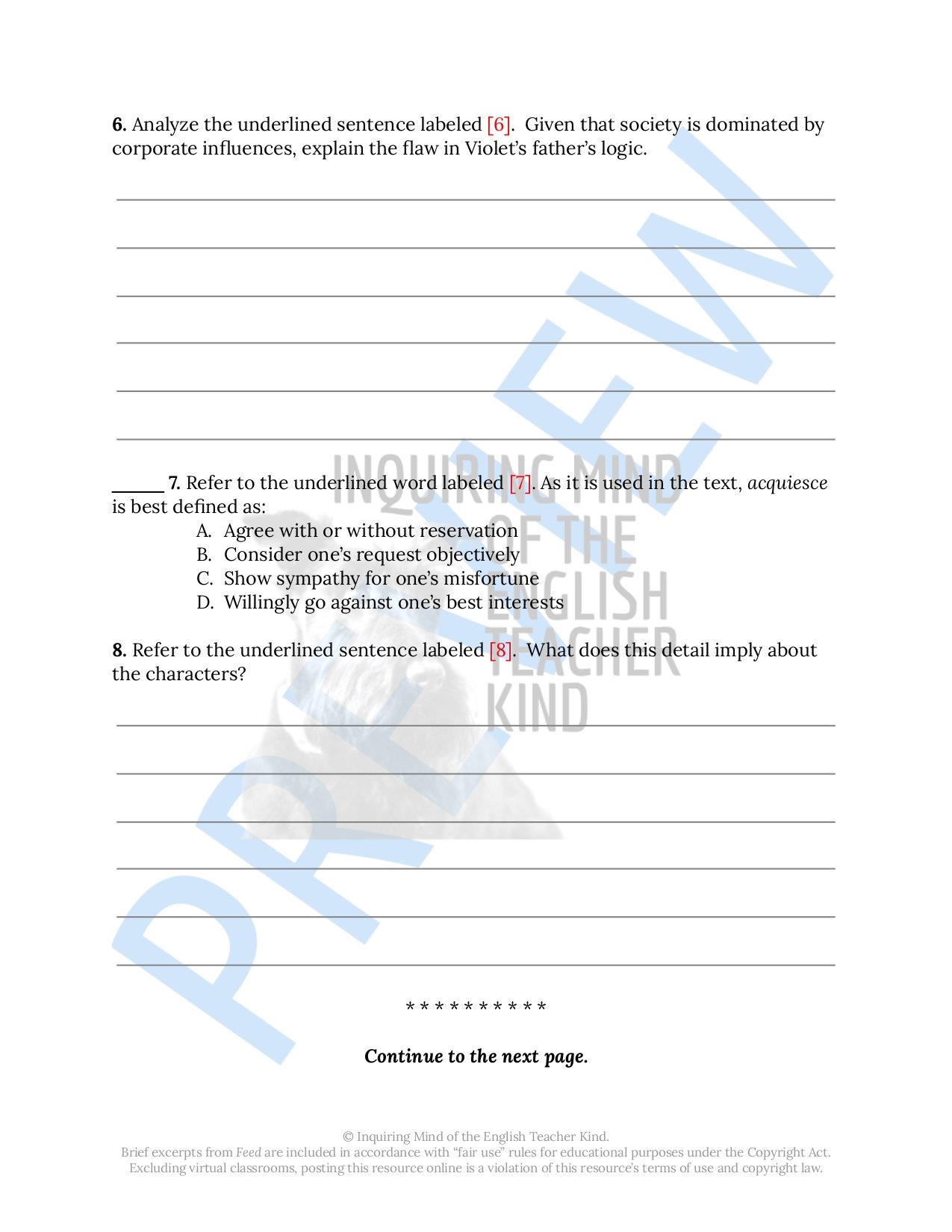 Image 21 of 26
Image 21 of 26

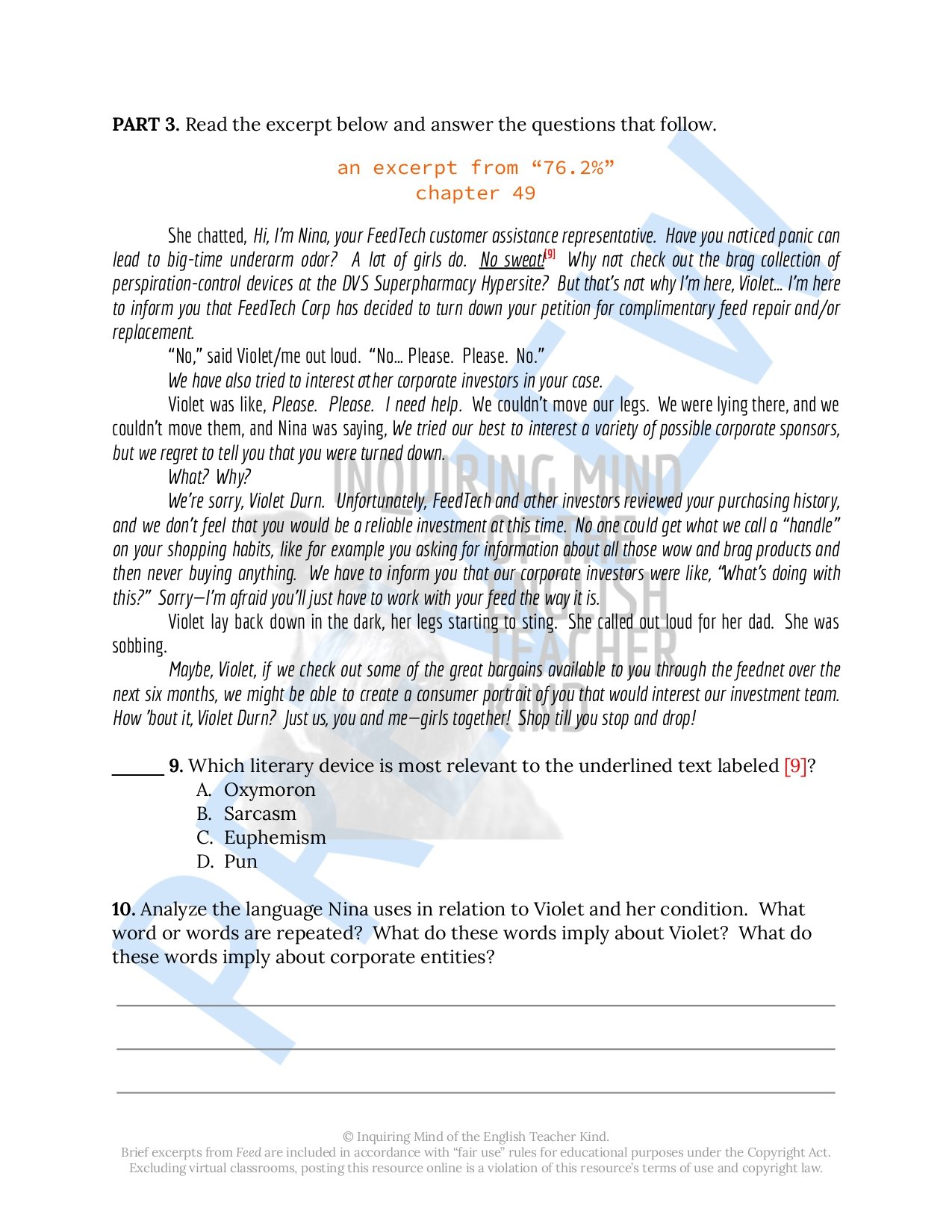 Image 22 of 26
Image 22 of 26

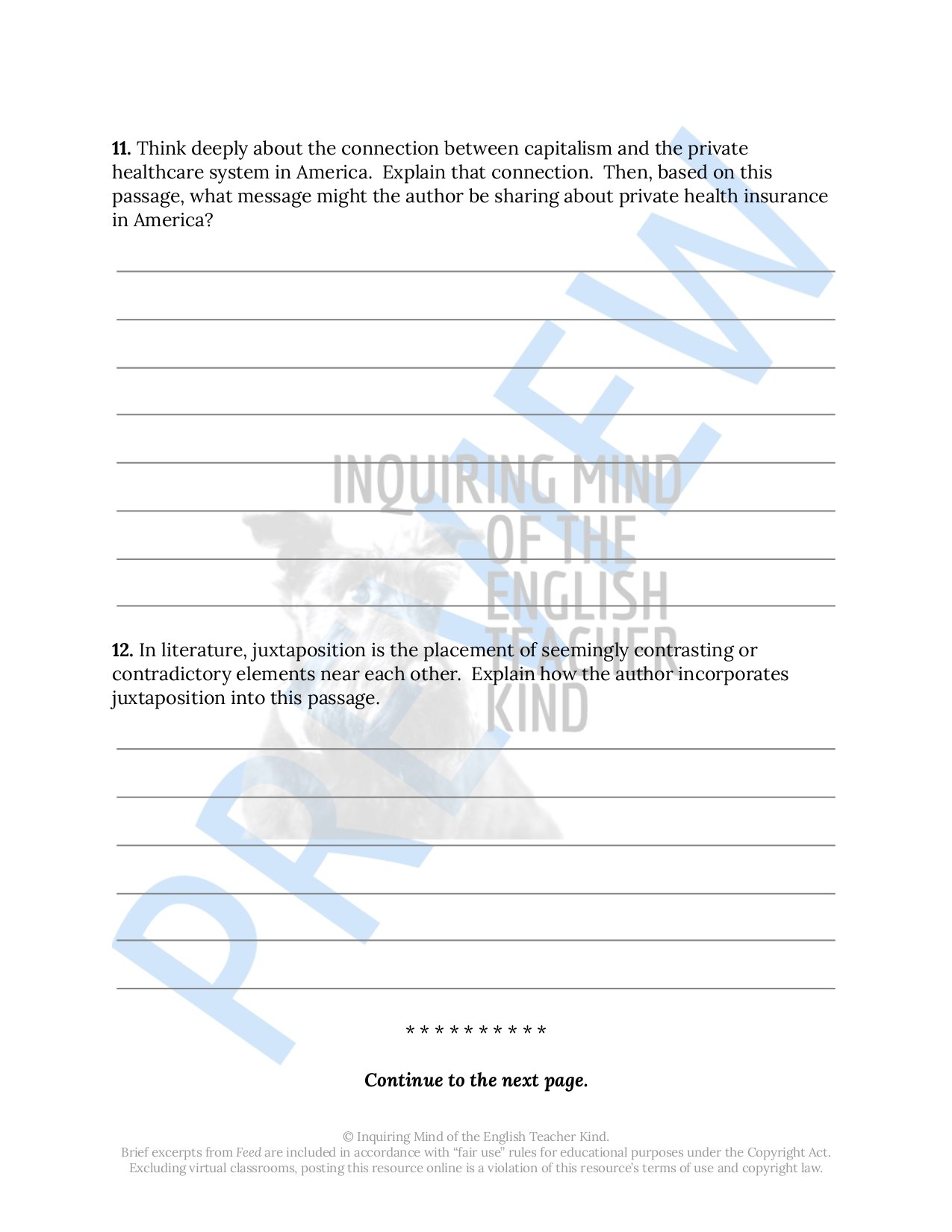 Image 23 of 26
Image 23 of 26

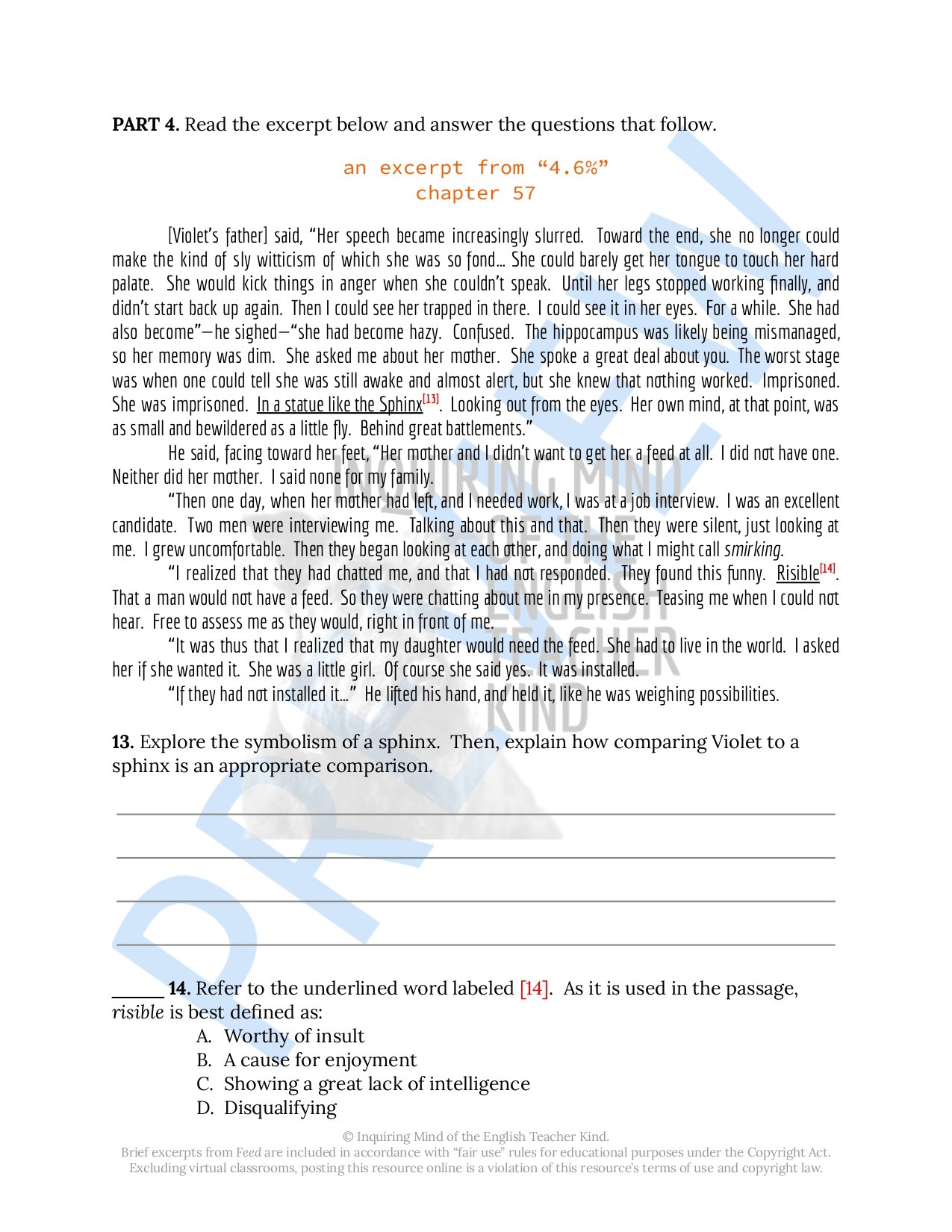 Image 24 of 26
Image 24 of 26

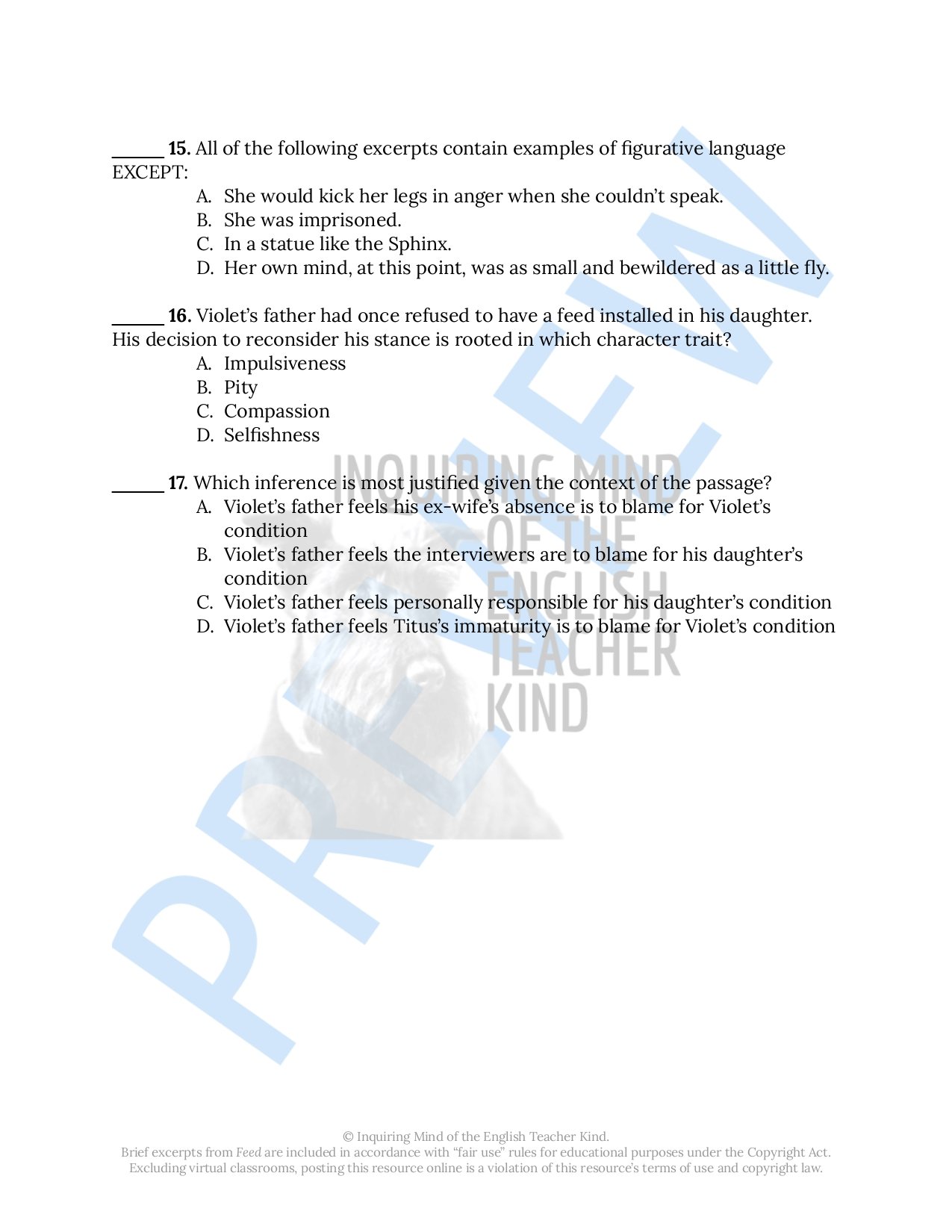 Image 25 of 26
Image 25 of 26

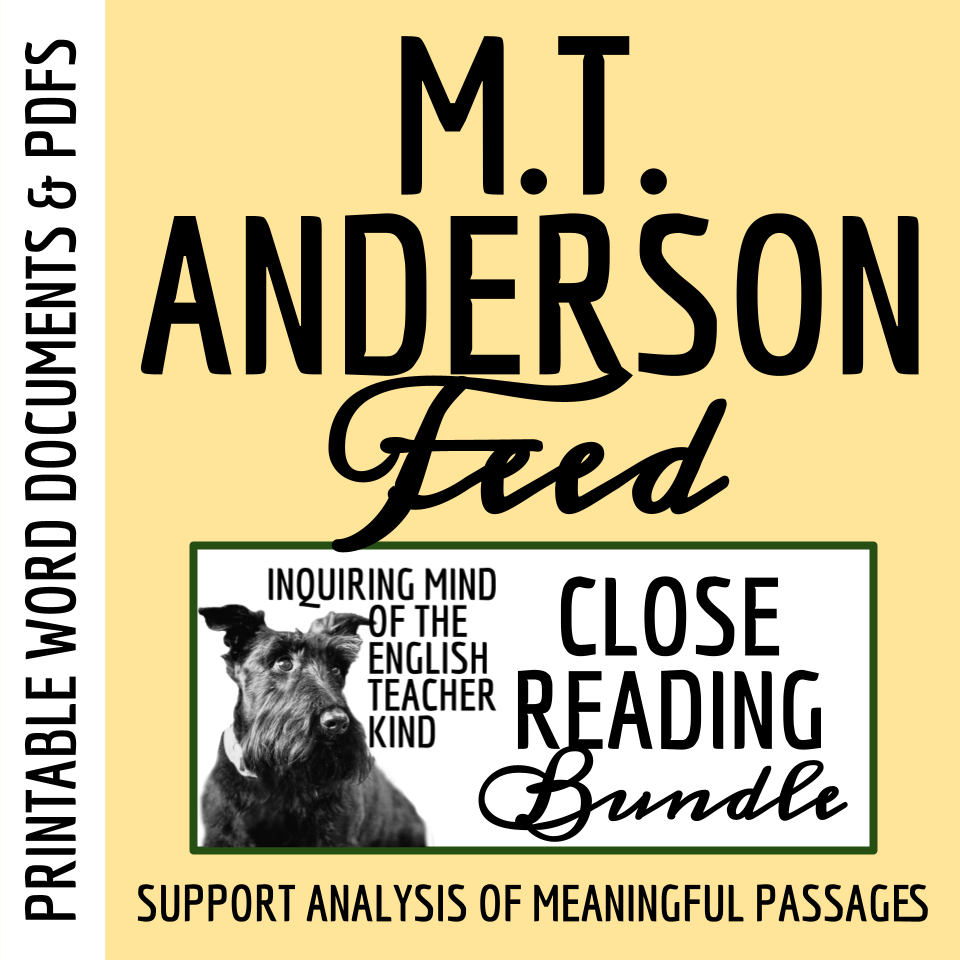 Image 26 of 26
Image 26 of 26



























Feed by M.T. Anderson Close Reading Analysis Worksheets Bundle
Challenge high school students to push beyond basic reading comprehension and exercise close reading analysis skills while engaging with Feed by M.T. Anderson, a dystopian science fiction novel. Included are several close reading worksheets, addressing fifteen meaningful excerpts from a variety of chapters, and answer keys. Given the incorporation of multiple choice questions alongside constructed response questions, each activity is rigorous enough for students to find deeper meaning in the text, yet convenient enough for teachers to quickly and efficiently gather data on students' textual analysis skills. Materials are delivered in Word Document and PDF formats. (Alternatively, a Google Drive bundle option is available.)
By the end of the novel, students will:
Identify what the text states explicitly and implicitly
Clarify details where the author leaves information open to interpretation
Isolate examples of figurative language
Express the greater significance of given details
Determine the tone of given excerpts
Discern the functions of given excerpts
Explore how complex characters think, behave, develop, and interact
Articulate flaws in characters' logic
Analyze the author's use of narrative techniques such as repetition
Apply knowledge of various literary devices including simile, metaphor, personification, slang, onomatopoeia, situational irony, consonance, pun, idiom, epiphany, invective, malapropism, aposiopesis, neologism, and more
Consider theme in relation to the text
Evaluate an excerpt to articulate how it is a good example of satire
Relate a given excerpt to the real world, identifying two relevant societal issues, conflicts, or questions
Explore the connection between capitalism and the private healthcare system in America
Conduct brief research on the topic of cognitive dissonance in order to explain how a character experiences it in the context of a given excerpt
Cite textual evidence in support of ideas and claims
Write about literature with clarity, accuracy, and precision
Materials in this bundle may facilitate small-group discussions in which students decode language and pose/respond to questions relating to plot, broad topics, and character development. Using these resources for structured guidance, students will improve their ability to present information, conclusions, and supporting textual evidence clearly and convincingly.
Materials are available for teaching a variety of young adult and dystopian novels:
Challenge high school students to push beyond basic reading comprehension and exercise close reading analysis skills while engaging with Feed by M.T. Anderson, a dystopian science fiction novel. Included are several close reading worksheets, addressing fifteen meaningful excerpts from a variety of chapters, and answer keys. Given the incorporation of multiple choice questions alongside constructed response questions, each activity is rigorous enough for students to find deeper meaning in the text, yet convenient enough for teachers to quickly and efficiently gather data on students' textual analysis skills. Materials are delivered in Word Document and PDF formats. (Alternatively, a Google Drive bundle option is available.)
By the end of the novel, students will:
Identify what the text states explicitly and implicitly
Clarify details where the author leaves information open to interpretation
Isolate examples of figurative language
Express the greater significance of given details
Determine the tone of given excerpts
Discern the functions of given excerpts
Explore how complex characters think, behave, develop, and interact
Articulate flaws in characters' logic
Analyze the author's use of narrative techniques such as repetition
Apply knowledge of various literary devices including simile, metaphor, personification, slang, onomatopoeia, situational irony, consonance, pun, idiom, epiphany, invective, malapropism, aposiopesis, neologism, and more
Consider theme in relation to the text
Evaluate an excerpt to articulate how it is a good example of satire
Relate a given excerpt to the real world, identifying two relevant societal issues, conflicts, or questions
Explore the connection between capitalism and the private healthcare system in America
Conduct brief research on the topic of cognitive dissonance in order to explain how a character experiences it in the context of a given excerpt
Cite textual evidence in support of ideas and claims
Write about literature with clarity, accuracy, and precision
Materials in this bundle may facilitate small-group discussions in which students decode language and pose/respond to questions relating to plot, broad topics, and character development. Using these resources for structured guidance, students will improve their ability to present information, conclusions, and supporting textual evidence clearly and convincingly.
Materials are available for teaching a variety of young adult and dystopian novels:
Preview this resource.
Challenge high school students to push beyond basic reading comprehension and exercise close reading analysis skills while engaging with Feed by M.T. Anderson, a dystopian science fiction novel. Included are several close reading worksheets, addressing fifteen meaningful excerpts from a variety of chapters, and answer keys. Given the incorporation of multiple choice questions alongside constructed response questions, each activity is rigorous enough for students to find deeper meaning in the text, yet convenient enough for teachers to quickly and efficiently gather data on students' textual analysis skills.
























